
Fay Manners writes about opening a new route in Patagonia with an all female team, consisting of Belen Prados, Caro North, Julia Cassou, and Rocio Guiñazu.
I looked up at the mountain in front of me and I couldn't see any obvious splitter cracks or clean open features. All I could see was blank vertical rock with trees and greenery dotted up it. I had seen El Cohete from afar, and had become enamoured with its winding ridge summit. I asked the girls if we could open a route on this unclimbed mountain, but while looking at it, I found it hard to imagine a line that was climbable, or even aidable. I remember having a sinking feeling in my stomach. I was unconvinced about the five weeks of climbing I had ahead of me.
I was thinking, "I travelled from the other side of the world, rode horses, crossed rivers, and this somewhat vegetated mountain was my objective?" I remember feeling ignorant and, to some extent, spoiled by the routes I had already climbed to date in Yosemite, The Trango Towers, and Chamonix. I expected the walls might be wet, but I didn't expect so much dirt and lichen. I was shortsighted to have felt so uninspired by the impressive unclimbed mountains surrounding me.
Belen Prados was the local here and had already visited Turbio IV. She found my reaction quite comical, as this was how she felt on her first visit. While I imagined alpine climbing the mountain in a few days, Belen explained that the best way to open a classic and repeatable route would be to climb - over the space of weeks - using static lines, so that we could clean the route from above. The objective here wasn't just about feeding our own egos by climbing a new route on an unclimbed mountain, but about leaving something safe and memorable for others to repeat, something that - in the end - would be beautiful.
I recall looking through the binoculars at a potential weakness in the rock that Belen had pointed out as a possible route we could climb. The climbing looked strenuous, and I could see that finding protection would be complex and technical. I would need to be patient. I would need to imagine something that looked completely different from what I was looking at now.
And so, it all began when Belen took the first pitch. It was slow, and I felt myself burning in the sun while watching her with curiosity from below.
When she was 20m up, "How is the climbing?" She replied, "No holds, no protection…" and after a long pause, "But beautiful!" This memory even makes me smile writing it now. After she shouted this, we both cackled with laughter, and at that point, the unique Patagonian style of this project began sinking in.
For the next four weeks, we worked as a team, taking it in turns to open pitches, clean pitches, and go back down for the food supplies when needed. This group dynamic was something new for me, as on most of my other expeditions I had climbed with just one partner where communication is much easier to manage. Caro's previous experience with larger-scale expeditions helped settle me in, and although not all of us were climbing every day, we were all doing something to help open the route in some way. There was a strong feeling of camaraderie, of all of us contributing to a project in different ways, each of which benefited the team.
We found a bivy spot close to the wall where we were opening the route, situated next to a small lake. One morning, Ro asked me, "Have you noticed that the lake changes colour throughout the days? Now we can see the reflections of the mountains in it, but yesterday during the day it was bright blue with the sunshine, and the day before, it was deep grey because of the clouds."
The bivy spot began to feel like home to us all, and on most evenings, we would return late back to the camp, making the most of the cooler temperatures for climbing in the late afternoon and early evening.
The style of climbing suited me well. Growing up in the UK has got me accustomed to a more bold, adventurous style of climbing. While opening this route, I felt surprisingly comfortable climbing into the unknown and unpredictable walls, and I also became more motivated to leave behind a beautiful route after we left. Quite often, a corner covered in vegetation didn't necessarily reveal a crack for placing protection, and we would have to be creative, using aid climbing to get up and place bolts later.
I found myself relying on the expertise of the others who had more experience bolting routes to advise me on the best placements for the bolts. This whole experience gave me more empathy for those who have bolted a route before, especially when I have complained that the bolts were in the wrong place! Now I realise that there are so many factors that might influence where you can place an anchor or some bolts on the route; it isn't always easy for the first ascensionists to do it perfectly.
Spending days cleaning the route was definitely a first for me. I had never spent so much time cleaning a route on a static line after climbing it. I was finally grateful for the metal brushes, goggles, and eye drops that had been packed for the adventure. I suppose before I hadn't really understood the relevance of this equipment, but, once I was there, they were the most important tools of the trip.
As time passed, the process of cleaning a route became like cleaning my house; I became quite fixated on cleaning every part of it. I wanted the cracks to be smooth so that you could place cams in there without them ripping out; I wanted the crimps on the side to be dusted from all their dirt. I found the days of cleaning that I did more exhausting than the days of free climbing, getting a sore elbow from brushing hard, and a sore hip from hanging in the harness for so long.
Julia saw our trip through a different lens, and she taught me to open my eyes to the beauty in the small things. I noticed little details, like the hummingbird that came to visit us on the anchor, the Alerce trees that have stood for hundreds of years, and the condors swooping above our heads. The trip wasn't just about the climbing, but also the beauty of nature and an ecosystem that is rare and cannot be found in many other places in the world.
When I left the valley, I could now see the incredible amount of unclimbed mountains and new lines in the area, something I couldn't see when I first arrived. The valley is only for those who are willing to look beyond their first glance, for those who can imagine possibilities beyond what they first see. I have realised how meaningful and satisfying the whole process of opening and cleaning a route in this style really is. I feel proud of the line and am glad to be able to share it with others. Hearing other climbers' stories of their experiences on this line will make all the hard work worthwhile.
- ARTICLE: This Is My Place 20 Oct, 2022

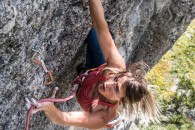














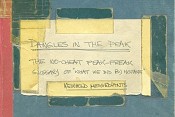
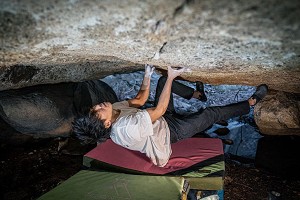
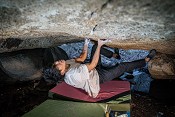
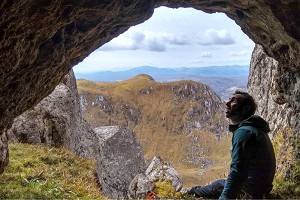
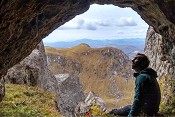









Comments